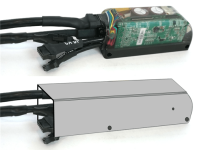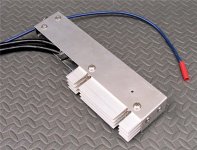Jason3 said:
Overall I like where you're going with this

Well everyone, as it is last week we sold the very last Phaserunner that used the hardwired phase and battery leads with the built in on-off switch, and have fully switched over production to this
design with the connectorized power leads. The actual assembly process is definitely a lot cleaner now, we can use prebent solid core wire wire for going into the powerboard PCB and don't have to handle the excess cable bundles during the various mold installation and potting steps

And after potting:
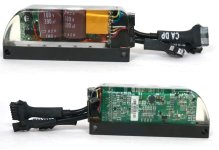
However, as mentioned we loose the embedded on/off button since there wasn't room to fit the latching circuitry on the PCB with the real estate taken up by the XT60 and MT60 connectors on the daughterboard. So by default now all the controllers are similar to our
first production batches from 2015 which have the on/off key switch wires tucked under the throttle heathrink. By default these are shorted together to the controller will just turn will turn on with battery power, and if you want to have a separate controller on/off switch you need to separate these wires and hook them up to a switch, illustrated in this post here
https://endless-sphere.com/forums/viewtopic.php?p=1075988#p1075988
For better of for worse, we stuck with JST-SM connectors for now on all the signal wires. There wasn't any really clean way of handling the motor phase cable. If you have separate phase cable and hall cable then you just terminate the phase with MT60 and halls with JST, but if it's a single cable that has both the phase and hall wires in one jacket, then this needs to be terminated with two plugs that are staggered at different distances, with the phase wires to MT60 being about 4-5cm longer than the hall plug.
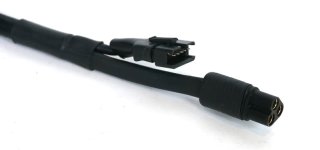
The net effect isn't too bad,
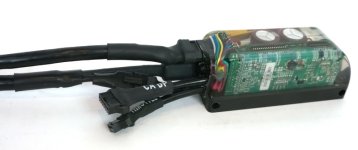
but it is a bit bulkier and messier than the previous design that just had a clean cable exit from the mold and so we'll be including a velcro sleeve with each PR device that you can wrap around this connector bundle to clean up the look on the bike frame.
For now we'll initially be including a phase cable that has a 1m lead to anderson powerpoles for the motor like this:

And the plan is to start the process of preparing an assortment of cable harness options that people can choose from to have setups that are plug and play with other existing motor connector standards. Like the Higo L1019 (http://www.higoconnector.com/products/l1019ag-p-00-az-1000/DK99K#title). If people have input on what kind of length and termination type would be handy for a lot of the builds out there which are getting Phaserunner upgrades, now's the time to chime in!
We still need to now make an updated user manual and all that so that the documentation reflects these design changes, but just know that any phaserunners ordered now will be of this type regardless of what the photos show on our website.








